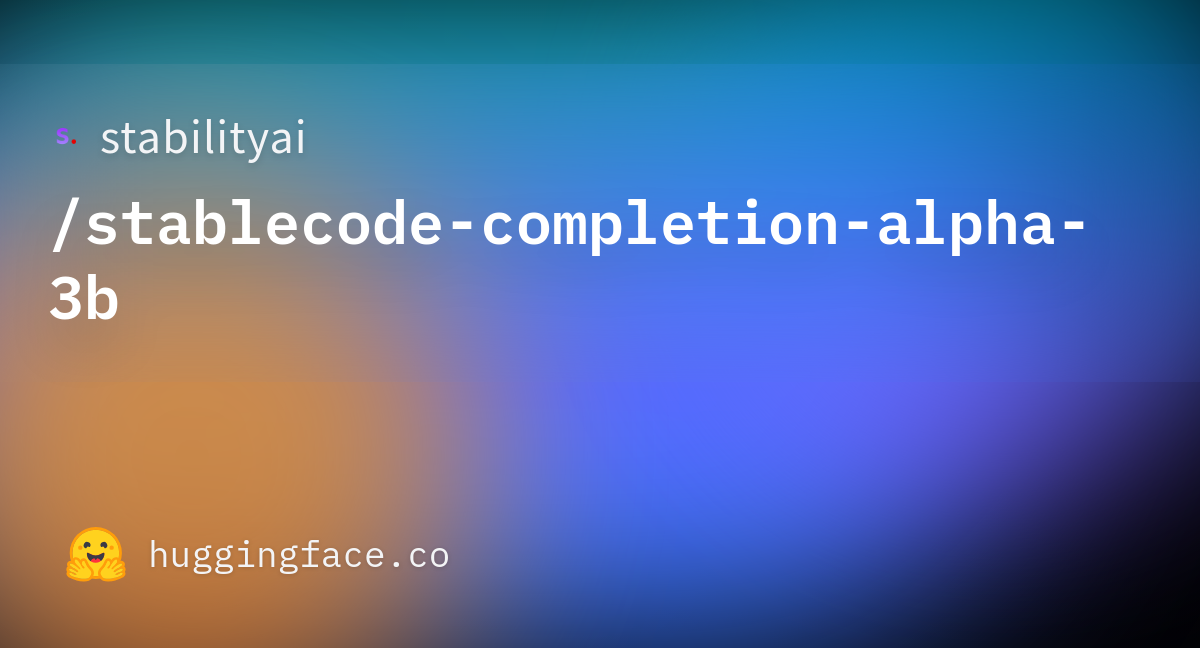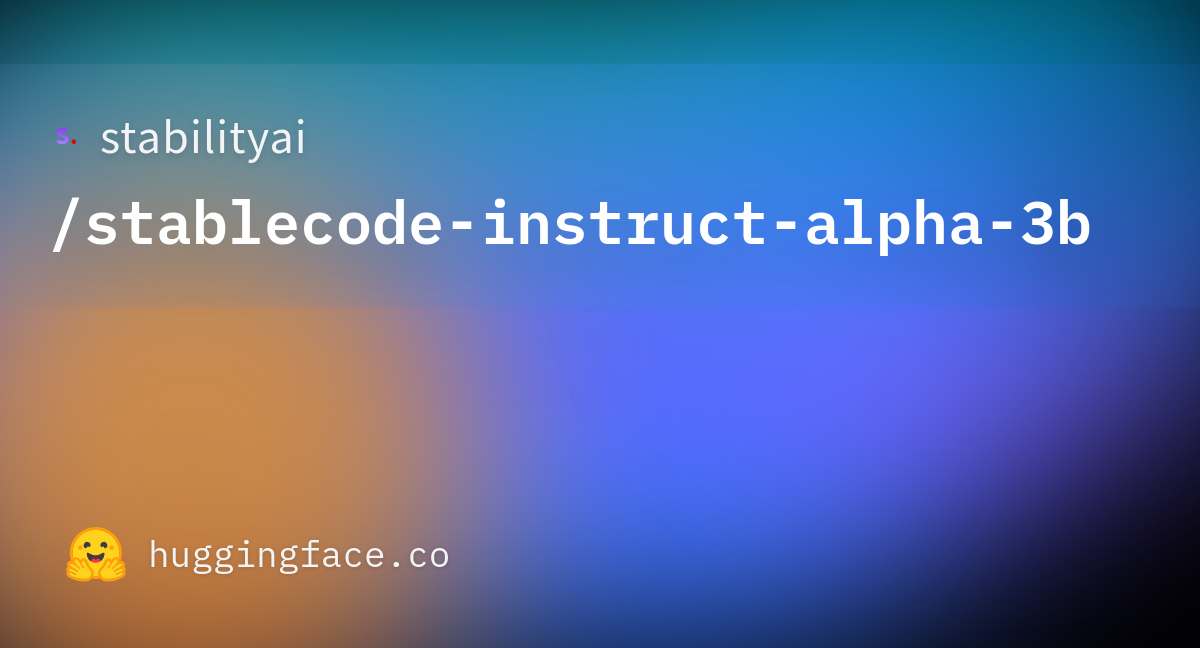A New Paradigm: Smaller Models with Potent Capabilities
There is an evident shift in the direction AI-based coding models are taking. While there has been a tendency to develop massive models with parameters ranging in the tens of billions, Stability AI’s introduction of StableCode, a three-billion-parameter model, indicates a turning tide. The move toward such smaller models could be viewed as a strategic decision to consider users with limited hardware resources, allowing for more inclusive access.

Deep Dive into StableCode
What is StableCode?
StableCode, despite being branded by Stability AI as the first LLM (Language Model) generative AI product for coding, isn't the first of its kind. Other models, such as the Repellent Model and Wizard LM coder, have been in this space. However, the emphasis here might be on Stability AI's unique offering within this domain.
Model Construction and Training
StableCode has been constructed using the 'stack dataset', a product of the Big Code project managed by Hugging Face. The data set, a culmination of programming questions and solutions, serves as a comprehensive training bed for AI models. Stability AI's unique approach involved initial training on the stack dataset and subsequent fine-tuning on popular languages such as Python, Go, JavaScript, Java, C, and C++, leading to a total training on an astounding 516 billion tokens of code.
Training and Specialization
Nathan Cooper, an instrumental figure at Stability AI, has shed light on the rigorous training StableCode underwent. By employing a combination of BigCode data and unique algorithms, Stability AI ensured that StableCode was well-prepared. A unique approach similar to natural language domain models was adopted, which starts with pre-training a generalist model and then fine-tuning it on a specific set of tasks or languages.
The Three Offerings
Stability AI has unveiled three variants of the StableCode model:
- Base Model: Designed primarily for code completion tasks, it can effectively predict the next code lines and complete code structures, both for single and multi-line codes.
- Instruction Fine-tuned Model: As the name suggests, this variant has been specifically refined to accept instructions and generate code based on them. For example, instructing the model to produce Python code for the Fibonacci series would result in the model delivering the corresponding code.
- Long Context Window Model: This model's speciality is its capability to maintain a context window of up to 16,000 tokens, providing users with a broader range of code generation without losing context.



StableCode’s Unique Selling Point: The Extended Token Length
Redefining Code Generation with Long-Context Window
StableCode boasts an unrivalled feature: a long-context-window version with a context window of a staggering 16,000 tokens. This enables more intricate code generation prompts and facilitates comprehension and generation of new code from medium-sized code bases spanning multiple files.
Tailored Code Generation
This increased token capacity does not merely exist for flaunting but has practical implications. It aids in generating code that is specifically tailored to the user’s existing code base, ensuring seamless integration and functionality.
A Distinctive Approach: The Adoption of Rotary Position Embedding (RoPE)
The Rationale behind RoPE
All modern generative AI models operate based on a transformer neural network. StableCode diverges from the mainstream by adopting the rotary position embedding (RoPE) over the commonly used ALiBi approach. This choice stems from a critical observation: coding doesn't follow the structured narrative of natural language. Given that code lacks a linear progression of a beginning, middle, and end, RoPE offers a more unbiased, balanced view of all tokens, regardless of their position.
Licensing and Commercial Use
One of the highlights of the StableCode offering is its licensing structure. The base model is available under the Apache 2.0 license, allowing developers to use it freely for commercial applications. However, the instruction fine-tuned model comes with a more restrictive 'Stable Code Research License', limiting its use to non-commercial, research-oriented applications.
Application Ecosystem: Integration and Extensions
The StableCode models, while robust in themselves, have been further bolstered with integration possibilities. For instance, Hugging Face has partnered with Stability AI to offer a VS Code extension. This extension, however, relies on Hugging Face's inference API, which might raise concerns regarding data access and privacy.
Benchmarking StableCode
When juxtaposed with other models like Repellent coder and Star coder from Big Code, StableCode has demonstrated commendable performance on benchmarks such as Open AI's human evaluation. This potentially positions StableCode as not just a smaller, more efficient model but also as a potent competitor in terms of performance.
Concluding Thoughts
The release of StableCode is a testament to the shifting priorities in the AI landscape, emphasizing inclusivity and practicality. While benchmarks provide an initial validation of the model's capabilities, the real test lies in its real-world applications and adoption by developers and businesses.







